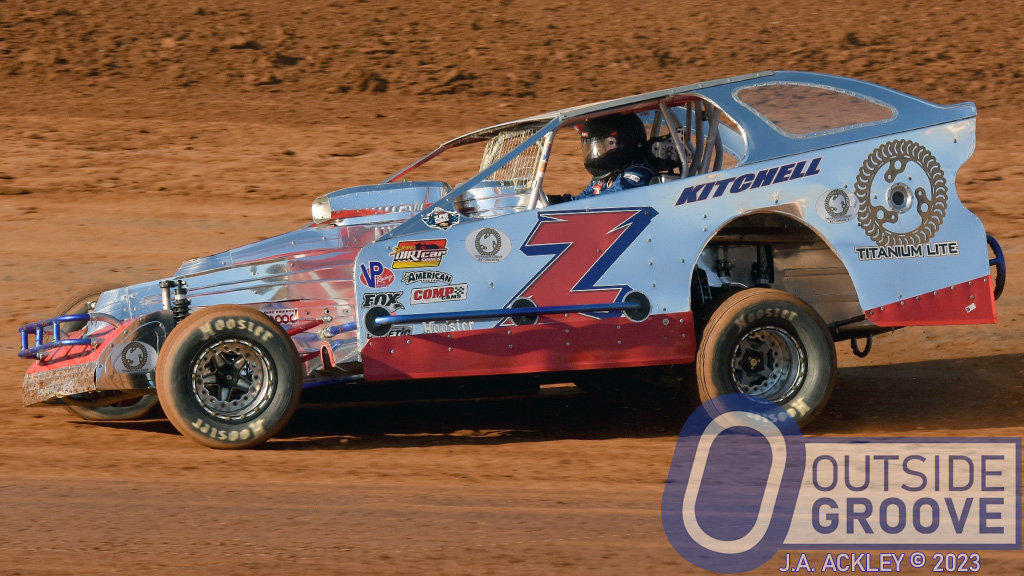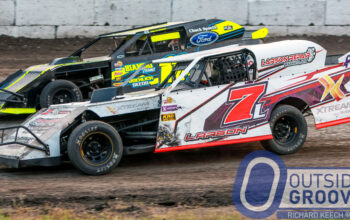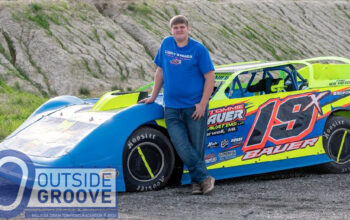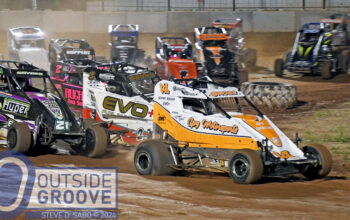Ed Kitchell loves to innovate. He owns several patents. Kitchell applied that penchant to invent on the modified he campaigned during the Super DIRTcar Series event at The Dirt Track at Charlotte Motor Speedway.
The Chassis of Ed Kitchell
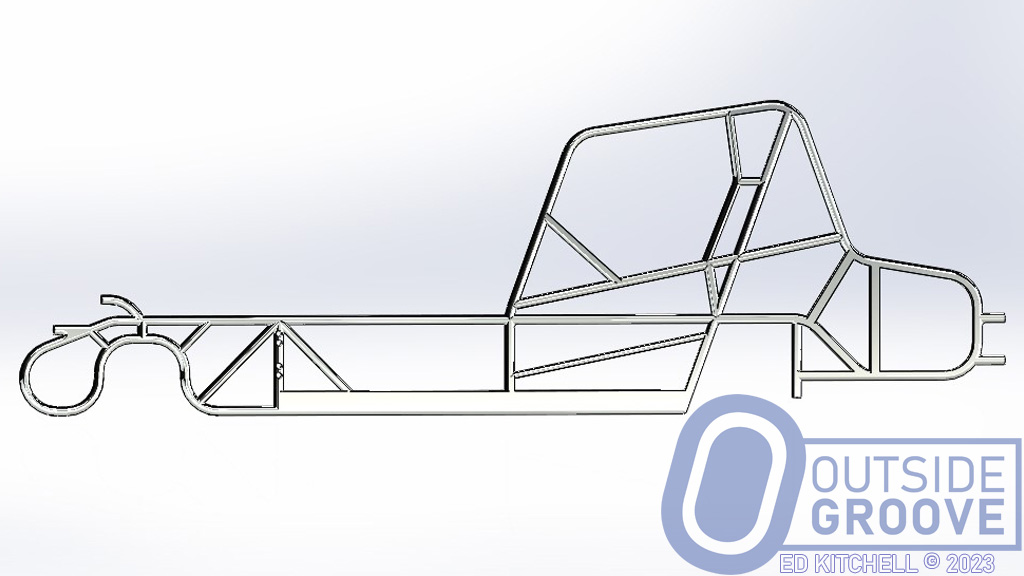
Kitchell started building his own modifieds in 1970. Over the course of his time in the sport he has built 10. One them was a downtube car, with the entire cage being constructed out of one piece of tubing. An Australian ordered it but never picked it up.
“The tube looped 158 degrees at the bumper, up over the top of the car, over the driver, back down over the fuel cell and to the rear uprights,” Kitchell, of Clifton Park, New York, said. “It eliminated 50% of the welding, and because there was no tubing to the rear end, it would stay on the track and not lift.”
Kitchell applied some of those learnings from that experiment to his current car, which also uses essentially one tube for the entire chassis frame. A truss reinforces the front axle tube. Plus, the car has 42″ of engine setback, unlike the more customary 36″.
“The setback to 42″ provides more weight transfer and better forward and side bite,” said Kitchell. “The one-piece frame tube, which makes up the entire right [and] left sides, were bent in 15 minutes total time without the welding. The elimination of welded joints yields superior strength.”
Radius Rod Setup
The design of the radius rod setup Kitchell uses doesn’t seem to deviate much from the norm — that is until you consider the length of the right-side radius rod. He said most racers run a right-rear radius rod of around 38″ long. His measures at about 46″.
“The more forward the right hinge point of the right-front Heim, the easier it is to push the nose of the car to the left with the long rod,” said Kitchell. “Think about carrying a large object upstairs with your buddy. The person on the bottom has more of the load, whereas the person on the top has more control and less load. The same applies here, with the left side carrying much more load with short rods and less load on the right side.
“When the car lays over on the right side, it doesn’t need a sharp angle because it gets weight transferred from the centrifugal force. On the left side, you can put an acute angle into the radius rod, 25–30° just sitting. As the car leans over, the angle of the left-side radius rod is pushing the car up, which buries the left-rear tire. This helps drive the weight transfer to the right side, which gets a similar amount of force.”
What Panhard Bar?
Instead of a Panhard bar, Kitchell uses a J-bar more commonly found in late models. It attaches to the chassis on the left and the bottom of the rear end on the right side.
“The J-bar being longer has more finite hinge points and is more forgiving as the angle of attack is not so severe, then a Panhard [-bar setup],” Kitchell said. “Most of today’s cars do not have a ton of offset and the J-bar mounted on the right-hand side of the pinion places the generated down force equally between both left- and right-rear tires.”
Dynamic Torque Tube Slider
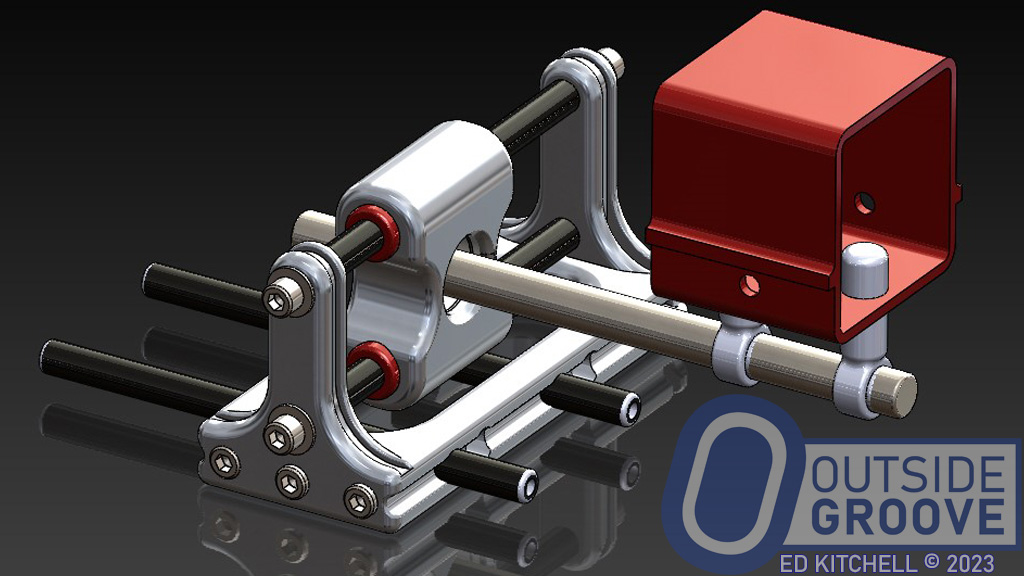
Kitchell uses this dynamic torque tube slider. It attaches to the typical Northeastern-style modified torque arms, where the torque rod slides into a COM bearing for plunge. The bearing cage of Kitchell’s design runs across two rods and uses a linear bearing. This allows smooth transition right to left. In conventional setups, the torque arm pulls the center rod end assembly to the right, which causes bind rather than more lift. Kitchell said his assembly removes the bind completely.
It’s not a Cadillac, But …
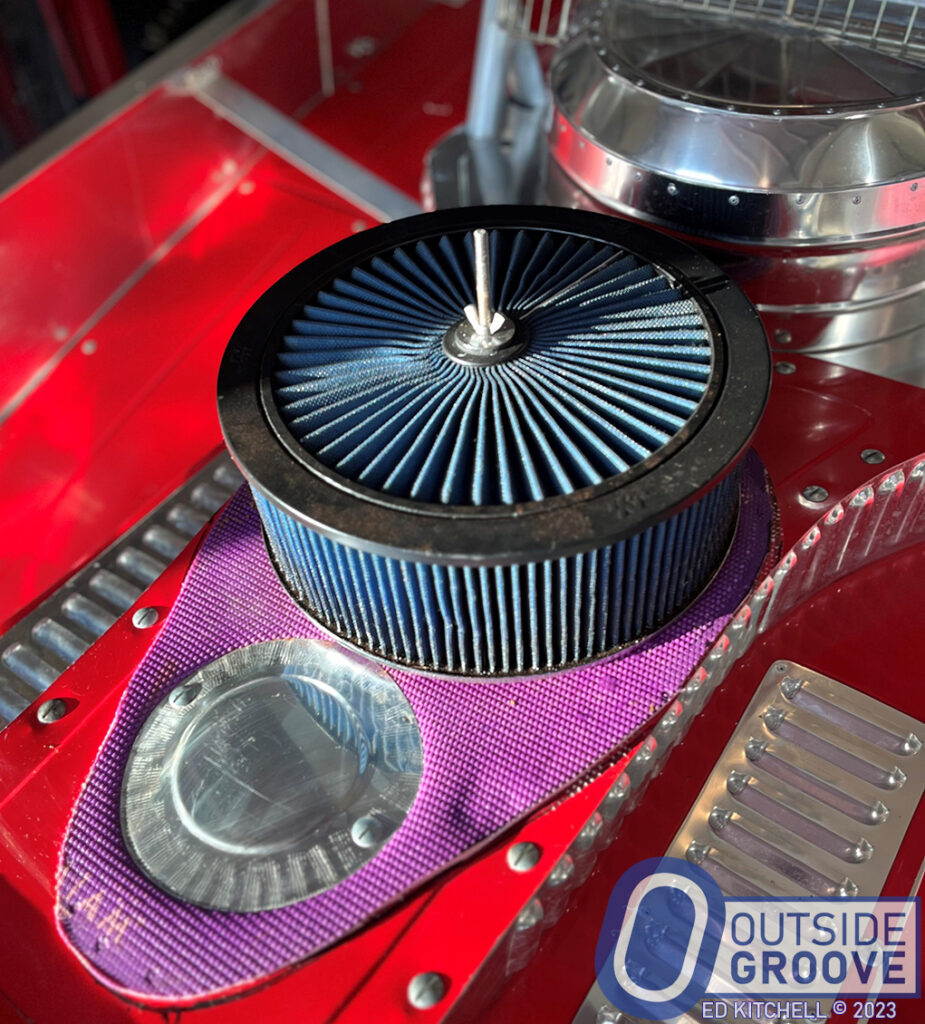
Rumors swirled that Kitchell had a Cadillac engine under his hood at the World of Outlaws World Finals. The engine instead was one of the more conventional items on his car–it was a big-block Chevrolet. However, the large air scoop leading to the engine was anything but conventional.
“The scoop forces air into the engine, which works well on a big track like [The Dirt Track at] Charlotte Motor Speedway,” Kitchell said. “At first, the tech inspectors said it was illegal and I had to block it off. Then I showed them the rule book — one form of induction is allowed.”
The setup essentially helps build more air pressure inside the carburetor than a conventional air cleaner. More air pressure generates more horsepower.
Steel Brake Rotors Light Like Titanium
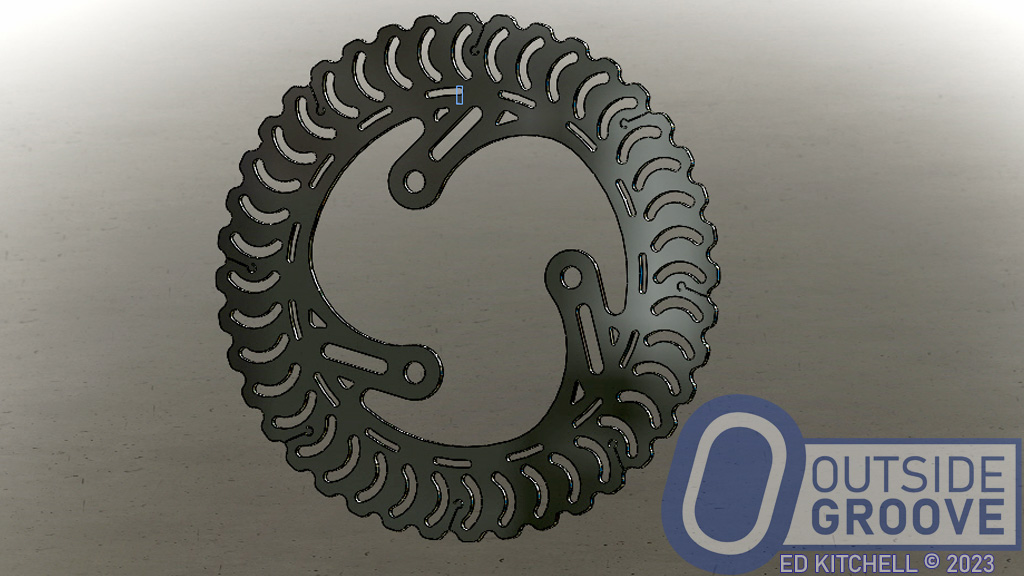
Kitchell produces a line of patented brake rotors dubbed Titanium Lite. Despite the name, they are actually made of steel, but weigh just as much as rotors constructed out of titanium. Kitchell said his brake rotors won’t warp due to high heat because the design absorbs the expansion of the metal as temperatures build.
One key product from the line is the 1.12-lb. brake rotor, which weighs about 2–3 lb. lighter than most brake rotors used today in Northeastern-style dirt modifieds. The laser-cut 11″-diameter rotor is constructed out of 3/16″-thick steel. Kitchell engineered it with crate modifieds in mind.
Headers and Bigger Wings
Kitchell designed a custom set of headers that drop vertically, similar to what you find in a drag car. This allows the side wings to start lower to the ground than using conventional headers, permitting the wings to get more air. The front nosepiece is also shaped like V, directing even more air to the side wings. Lastly, the side wings go up at a steeper angle than normal near the rear tires. All three aspects — the lower side wing, V-shaped nose and a steeper angle — add more downforce to right above the rear tires.
Why Ed Kitchell Does It
Ed Kitchell started racing in 1970, and that was when his lifelong fascination with building better race cars started.
“All these years, I have been an experimenter,” said Kitchell. “I only purchased one car — from Troyer in 1986. When I bought it, I looked for things to improve — I wanted the car lower, more inside weight, more traction, more side bite. I made it a four-bar car.”
Kitchell acknowledges that while he has feature wins, he does not frequent victory lane. However, he judges success by a different factor.
“My inventions being tested, patented and in use — that’s a win for me,” Kitchell said. “Thirty cars are using [my brake rotors] between [Albany-Saratoga Speedway in] Malta and Fonda [Speedway in New York].”
Mike Adaskaveg has written hundreds of stories since the website’s inception. This year marks his 54th year of covering auto racing. Adaskaveg got his start working for track photographer Lloyd Burnham at Connecticut’s Stafford Motor Speedway in 1970. Since then, he’s been a columnist, writer, and photographer, in racing and in mainstream media, for several outlets, including the Journal Inquirer, Boston Herald, Stock Car Racing, and Speedway Illustrated. Among Adaskaveg’s many awards are the 1992 Eastern Motorsport Press Association (EMPA) Ace Lane Photographer of the Year and the 2019 National Motorsports Press Association (NMPA) George Cunningham Writer of the Year.

